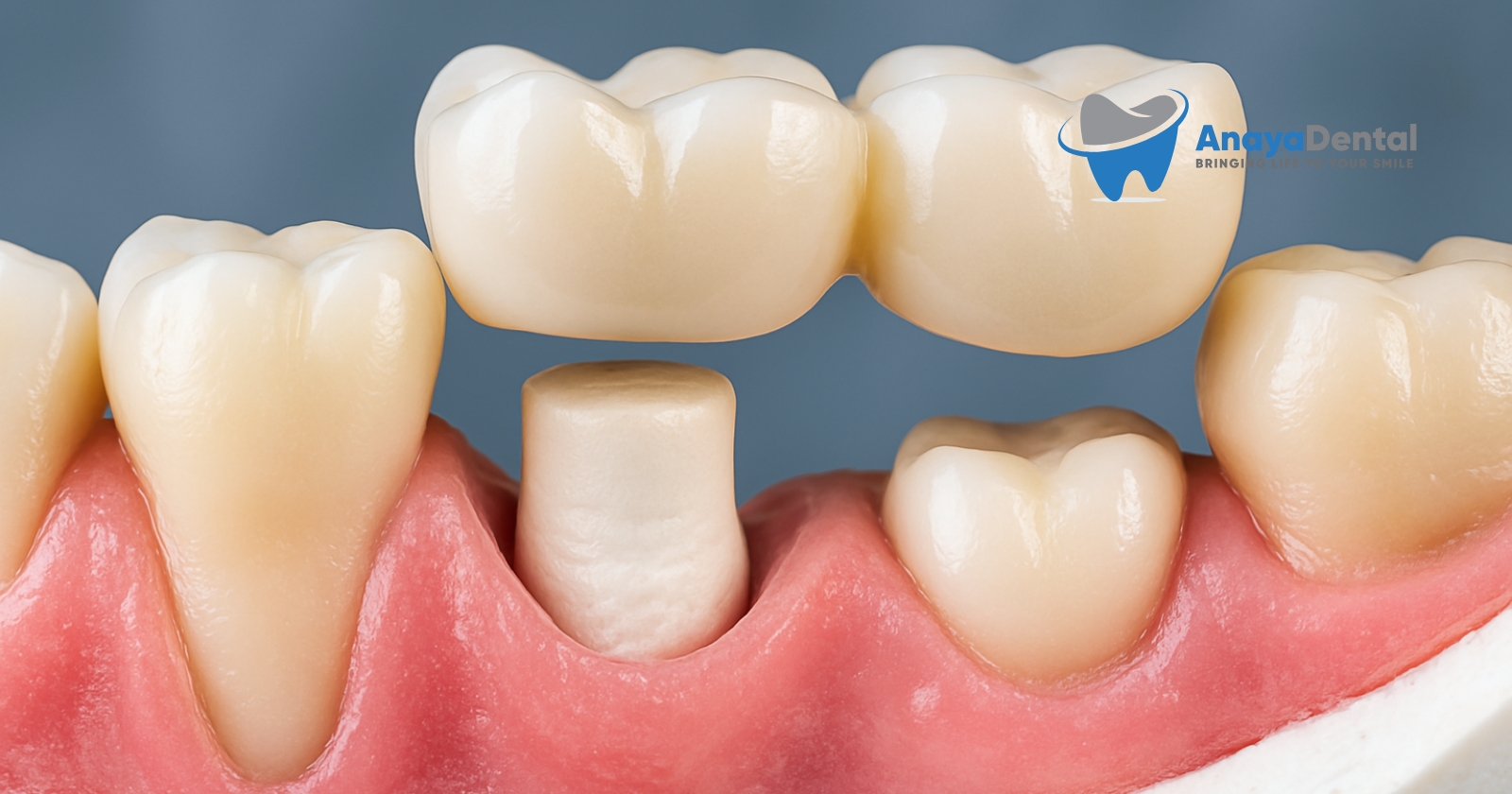How You Can Understand Dental Bridge Sectioning Codes to Manage Treatment Costs
Are you facing dental bridge work and confused by insurance codes? You’re not alone. Navigating dental procedures and their associated American Dental Association (ADA) codes can feel overwhelming, especially when trying to understand your treatment plan and potential costs.
This guide will help you make sense of section bridge ADA codes, understand what bridge sectioning involves, and learn how these codes affect your dental care costs and insurance coverage.
What Is a Dental Bridge and Why Might You Need One?
Before diving into the specifics of bridge sectioning codes, let’s understand what dental bridges are and their purpose.
Try Our Dental Calculators
A dental bridge is a fixed prosthetic device that replaces one or more missing teeth by spanning the gap between remaining natural teeth or implants. Bridges restore your smile, maintain face shape, prevent remaining teeth from shifting, and restore your ability to chew and speak properly.
Dental bridges typically consist of:
- Pontics: The artificial teeth that replace your missing natural teeth
- Retainer crowns: The components that attach to your natural teeth (abutments) or implants to secure the bridge
Understanding the Main Bridge Sectioning ADA Code
If you’re reviewing your dental treatment plan or insurance statement, you might encounter various codes. For bridge sectioning, the primary code you’ll see is:
D9120: Fixed Partial Denture Sectioning
This code specifically refers to the procedure of cutting a dental bridge (also called a fixed partial denture) into sections. You might need this procedure if:
- A portion of your bridge has been damaged but other parts remain functional
- Your dentist needs access to teeth or tissue underneath the bridge
- Part of your bridge has failed but complete replacement isn’t necessary
- Your treatment plan has changed, requiring modification to an existing bridge
The D9120 procedure typically involves:
- Application of local anesthesia
- Assessment of your bridge
- Precise cutting of the bridge using specialized dental tools
- Removal of the separated section
- Any necessary follow-up treatments
Important note: Some sources incorrectly reference D1354 as the bridge sectioning code. However, D9120 is the correct code for this procedure according to official ADA guidelines.
Essential ADA Codes for Bridge Components You Should Know
When reviewing your treatment plan or insurance documents, you’ll likely encounter multiple codes related to different bridge components. Understanding these can help you better comprehend your treatment and associated costs.
Retainer Crown Codes That Affect Your Treatment Plan
Retainer crowns anchor your bridge to the abutment teeth. Different materials have different codes:
- D6740: Retainer Crown – Porcelain/Ceramic This type of crown offers superior aesthetics, making it ideal for visible areas of your mouth. While these look most natural, they can be more expensive and may have different insurance coverage rates.
- D6791: Retainer Crown – Full Cast, Predominantly Base Metal These crowns provide excellent durability, particularly for back teeth where chewing forces are strongest. They’re often more affordable than all-ceramic options but less aesthetically pleasing.
- D6790: Retainer Crown – Full Cast High Noble Metal Made from high-quality metal alloys, these offer both strength and biocompatibility. They represent a middle ground between aesthetics and durability.
Pontic Codes You’ll See on Your Treatment Plan
The artificial teeth in your bridge that replace missing natural teeth have their own codes:
- D6245: Pontic – Porcelain/Ceramic This code applies to artificial teeth made from porcelain or ceramic materials. These provide the most natural-looking replacements but may come at a higher cost.
Alternative Retainer Codes That Might Appear in Your Plan
For different bridge designs, you might see these specific retainer codes:
- D6548: Wing Retainer, Porcelain/Ceramic for Bonded Fixed Prosthesis Used when a porcelain or ceramic wing retainer is utilized in bonded fixed prostheses.
- D6549: Wing Retainer, Composite or Resin Applied when composite or resin wing retainers are used in bonded fixed prostheses.
How Implant-Supported Bridge Codes Differ From Traditional Bridges
If your bridge is supported by dental implants rather than natural teeth, different codes will apply:
- D6040: Implant-Supported Fixed Denture for One Section This code is assigned to the placement of an implant-supported fixed denture for one section of a bridge.
When Bridge Sectioning Becomes Necessary for Your Dental Health
There are several clinical scenarios where your dentist might recommend bridge sectioning:
Partial Bridge Damage That Affects Only One Area
When only one segment of your bridge is compromised but the rest remains functional, sectioning allows your dentist to replace only the damaged portion, potentially saving you significant costs compared to full replacement.
Access Requirements for Other Dental Work
Sometimes your dentist needs to access underlying teeth or tissue for additional treatments. Sectioning provides this access while preserving as much of the original bridge as possible.
Material Failure in Limited Areas
If a portion of your bridge material has failed but complete replacement isn’t warranted, sectioning enables targeted repair.
Changes to Your Treatment Plan
When your overall dental treatment plan changes, it may require modification of an existing bridge structure rather than complete replacement.
How These Codes Affect Your Insurance Coverage and Out-of-Pocket Costs
Understanding how dental codes translate to insurance coverage is crucial for managing your dental care budget:
Typical Insurance Coverage for Bridge Sectioning
Most dental insurance plans provide partial coverage for bridge procedures, including sectioning. However, coverage varies significantly between plans:
| Procedure | Typical Coverage Range | Waiting Period | Frequency Limitations |
|---|---|---|---|
| D9120 (Bridge Sectioning) | 50-80% | Often none | Usually none |
| D6740 (Porcelain Crown) | 50% | 6-12 months | Every 5-7 years |
| D6245 (Porcelain Pontic) | 50% | 6-12 months | Every 5-7 years |
Common Payment Options When Insurance Doesn’t Cover Everything
Since most insurance plans don’t cover 100% of bridge procedures, you should be aware of your payment options:
- Dental Savings Plans These membership-based plans offer discounts of 15-60% on various dental procedures, including bridge work. Unlike insurance, there are no annual maximums or waiting periods.
- CareCredit or Dental Financing These special healthcare credit cards often offer interest-free financing for 6-24 months, allowing you to spread out the cost of more expensive procedures.
- Payment Plans Through Your Dental Office Many dental practices offer in-house payment plans allowing you to make installment payments.
- Health Savings Accounts (HSAs) or Flexible Spending Accounts (FSAs) If you have either of these accounts, you can use pre-tax dollars to pay for qualified dental expenses, including bridge work.
Documentation Your Dentist Needs for Proper Coding and Insurance Claims
For successful insurance claims, your dental professional should provide:
- Detailed clinical notes explaining the necessity for bridge work or sectioning
- Pre-operative X-rays showing the condition necessitating treatment
- Information about specific materials used in bridge fabrication
If your claim is denied, ask your dental office about the documentation provided and whether an appeal might be appropriate.
Common Questions About Bridge Sectioning and Associated Codes
How Much Does Bridge Sectioning Typically Cost?
The cost of bridge sectioning (D9120) typically ranges from $200 to $400, depending on your location and the complexity of the procedure. However, this doesn’t include any subsequent work needed after the sectioning, such as repairs or replacements.
Will My Insurance Cover Bridge Sectioning?
Most dental insurance plans cover bridge sectioning at the same percentage rate as major procedures (typically 50%). However, coverage varies significantly between plans, so check your specific benefits.
How Long Does a Bridge Sectioning Procedure Take?
A typical bridge sectioning procedure takes approximately 30-60 minutes, depending on the complexity and location of the bridge.
Is Bridge Sectioning Painful?
The procedure is performed under local anesthesia, so you shouldn’t feel pain during treatment. Some minor discomfort or sensitivity may occur afterward but usually resolves within a few days.
Quick Review: What You Need to Know About Section Bridge ADA Codes
- D9120 is the primary code for dental bridge sectioning
- Bridge sectioning allows for partial repair or modification rather than complete replacement
- Different components of bridges have their own specific codes, which affect insurance coverage
- Insurance typically covers 50-80% of bridge sectioning costs
- Alternative payment options include dental savings plans, CareCredit, payment plans, and HSA/FSA accounts
- Proper documentation is essential for successful insurance claims
Understanding dental bridge sectioning codes can help you make informed decisions about your treatment options and prepare financially for necessary dental work. Always discuss codes, coverage, and costs with your dental provider before proceeding with treatment.
For more information about dental procedures and insurance coverage, consult with your dental provider or insurance company directly.


